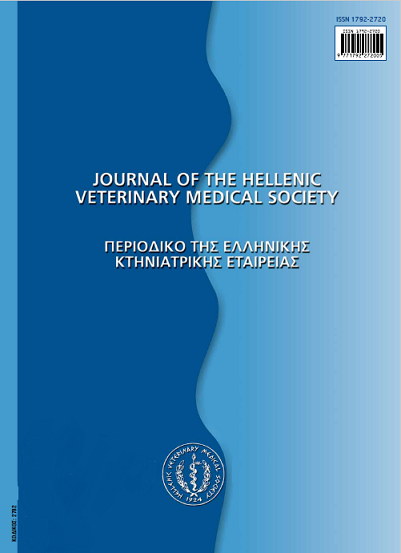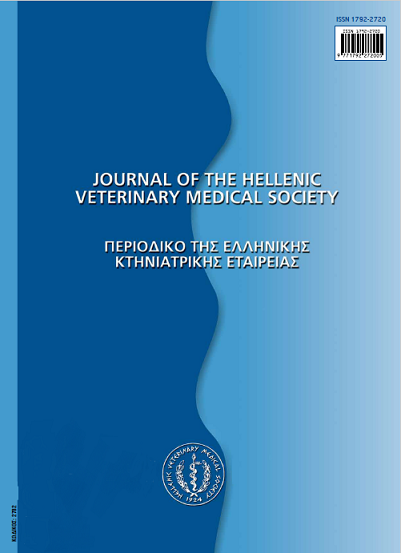Seroprevalence of Ehrlichia canis infection among privately-owned dogs in northern Bulgaria
Resumen
A serologic survey was carried out to detect the prevalence of Ehrlichia canis antibodies among privately-owned dogs in the counties of Varna, Silistra, Ruse, Montana, Veliko Tarnovo and Pleven of northern Bulgaria. A total of 120 serum samples were IFA tested for anti-Ehrlichia canis IgG antibodies. A mean seroprevalence rate of 37.5% was recorded with Varna county showing the highest value (60%) followed by Silistra (55%), Ruse (30%), Montana (30%), Veliko Tarnovo (25%) and Pleven (25%) counties. These results clearly show that dogs residing in northern Bulgaria are highly exposed to E. canis.
Article Details
- Cómo citar
-
TSACHEV, I., PAPADOGIANNAKIS (E.I. ΠΑΠΑΔΟΠΑΝΝΑΚΗΣ) E. I., KONTOS (Β. ΚΟΝΤΟΣ) V., ZARKOV, I., PETROV, V., & PELAGIC, V. (2017). Seroprevalence of Ehrlichia canis infection among privately-owned dogs in northern Bulgaria. Journal of the Hellenic Veterinary Medical Society, 57(3), 212–216. https://doi.org/10.12681/jhvms.15041
- Número
- Vol. 57 Núm. 3 (2006)
- Sección
- Research Articles
Authors who publish with this journal agree to the following terms:
· Authors retain copyright and grant the journal right of first publication with the work simultaneously licensed under a Creative Commons Attribution Non-Commercial License that allows others to share the work with an acknowledgement of the work's authorship and initial publication in this journal.
· Authors are able to enter into separate, additional contractual arrangements for the non-exclusive distribution of the journal's published version of the work (e.g. post it to an institutional repository or publish it in a book), with an acknowledgement of its initial publication in this journal.
· Authors are permitted and encouraged to post their work online (preferably in institutional repositories or on their website) prior to and during the submission process, as it can lead to productive exchanges, as well as earlier and greater citation of published work.




